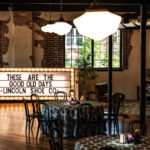Wine is a complex subject. All the terminology. All the perceived rules. All the subjectivity on what’s good and what’s not. So, when people hear I like wine, they will often start asking questions. Some of the questions are basic (what do I drink with XYZ?), and some are more complicated (how do I get into wine if I don’t like it?). However, most questions I answer stem from common wine myths. So, in an effort to set the record straight, here are three myths about wine – debunked!
A screw cap instead of a cork signals a low-quality wine
I remember a conversation with my dad where he described opening a bottle of wine. He said he put the corkscrew onto the bottle and started turning it. But, before he knew it, he had easily gotten through the cork. “I must have pushed the cork down into the bottle,” he said. “I ended up just pouring the wine out through the hole in the top.”
The wine he had opened was a Charles Smith Kung Fu Girl Riesling— a wine that’s bottled not with a cork, but with a screw cap. (Hence the “hole in the top.”) Laughing he said, “But, this isn’t a bad bottle of wine!”
And, he was right. Washington State’s Kung Fu Girl is a regular on the “Best of” lists of various wine publications and generally retails for $14 or so. It’s hardly Boone’s Farm, and yet neither bottle requires a corkscrew for opening.
The truth is, there are benefits and drawbacks with both types of closures, and depending on the type of wine and whether or not it will be aged, a savvy winemaker may have a very purposeful reason for choosing natural cork over a screw cap or vice versa. As an example, natural cork allows more oxygen into a bottle of wine over time than does an aluminum screw cap. For some wines (think: tannic red), this may be a benefit, as the oxygen will allow certain flavors to develop. For other wines (a crisp sauvignon blanc), this may be a drawback, especially if the winemaker expects the wine to be consumed within a handful of years.
Industry publication Wine Business Monthly issues a Closing Survey each year to determine how many wineries are using corks vs. synthetic closures vs. screw caps. The number of wineries (especially large wineries) using screw caps is increasing, but perhaps most interesting in this survey was that winemakers think consumers are becoming more accepting of screw caps.
I would imagine this may be in part due to big name wineries and regions putting their faith in screw caps. In fact, the New Zealand Screwcap Wine Seal Initiative was convened in 2001 by producers exasperated with the inconsistency of cork. The group performed research, fought the cork lobby (there’s a CORK lobby?) and developed informational materials on the most professional and romantic way to open a screw cap bottle. More than 90% of the bottles coming from New Zealand are now sealed with screw caps, and that includes wines from big name, reputable producers, including one of my favorites: Kim Crawford.
The bottom line is, you may find wine stays “fresher” when closed with a screw cap. But if you’re used to drinking wine aged with cork closures, you may find the wine too pristine. Regardless, the type of closure has little to do with the quality of the wine.
The more expensive the bottle, the better the wine
My husband and I used to have a $10/bottle limit on wines we purchased. If I had to guess, I’d say 7 out of 10 bottles we bought were satisfactory. Then, one day I was chatting with Lonn Hess, a former retail wine specialist at the Fruitville Pike Fine Wine & Good Spirits store, and he recommended upping the limit to $15. He said the difference between $10 and $15 can sometimes be extraordinary. We increased our budget, and I have to admit, it’s made all the difference in the world. Granted, in that time we’ve also learned a lot more about what we like, but there’s something about quality that skyrockets in that $5 increase.
But, what about a $25 bottle of wine? Or $50? Or $100? Here’s the thing. If you have a trained palate, I bet you will be able to tell the difference between a $15 bottle of wine and a $100 bottle of wine. And, if you prefer the more expensive bottle, there could be several reasons: The grapes may be higher quality; the barrels may be higher quality; the wine may have aged longer, etc.
Side note: One of the true sins of an inexpensive oaked wine is oak chips – small pieces of oak dumped in the wine while it ages in a container made of something other than oak. Because oak barrels are very expensive (sometimes $1,000+), some wineries do this to keep their prices down. But there is a stark difference, and I believe oak chipping is one of the reasons people say they don’t like oaky wines. Oak can give wine delicious toasty flavors or vanilla notes, but it shouldn’t make the wine taste like freshly-chopped wood.
But, other differences can be more subtle. I tried an $850 bottle of wine at this year’s Harrisburg Wine Fest (Penfolds Grange). It was good. But even with my palate, I didn’t think it was so spectacular that I would have guessed it cost 50 times more than any other bottle.
My conclusion: There is a HUGE difference between a $6 bottle of wine and a $15 bottle of wine and a noticeable difference between a $10 bottle of wine and a $50 bottle of wine. So, to address the myth mentioned above, while I believe the $850 bottle of wine may be “better,” it’s not SO MUCH better that it justifies the cost. And, unless you have an exceptional palate, the $50 bottle won’t likely be that much different than the $25 bottle. So, know your audience, and don’t buy a more expensive bottle “just because.”
People get headaches from red wine because of sulfites
Red wine headache is a very real thing. But, don’t be so quick to blame sulfites, which are added to wine as a preservative and to kill yeast. Sulfites do cause sometimes-life-threatening symptoms in less than 1% of the population, but they likely aren’t responsible for headaches, and – this may surprise some people – white wine contains more sulfites than red wine! If you get headaches from dried fruit, chips or pickles (all high in sulfites), chances are you may have a sensitivity.
So, if not sulfites, what causes wine headaches? Some experts are saying it could be histamine or tyramine, natural substances found in wine that dilate and constrict blood vessels. If you also get headaches from smoked or cured meats, aged cheese and citrus fruit, it could be a tyramine sensitivity. As for histamines, talk to your doctor about pairing an anti-histamine with your favorite glass of red wine to see if it helps (studies have shown red wine contains more histamines than white). Unfortunately, without more research, there’s no real way to know the culprit of wine headaches, which could also be caused by grape type, soil or fermentation process.
What’s the moral of this story? The next time you’re at Fine Wine & Good Spirits, pick up a $20 bottle of Kim Crawford pinot noir, twist off the screw cap and enjoy a great glass of red wine without worrying about sulfites. Cheers!





SHARE
PRINT